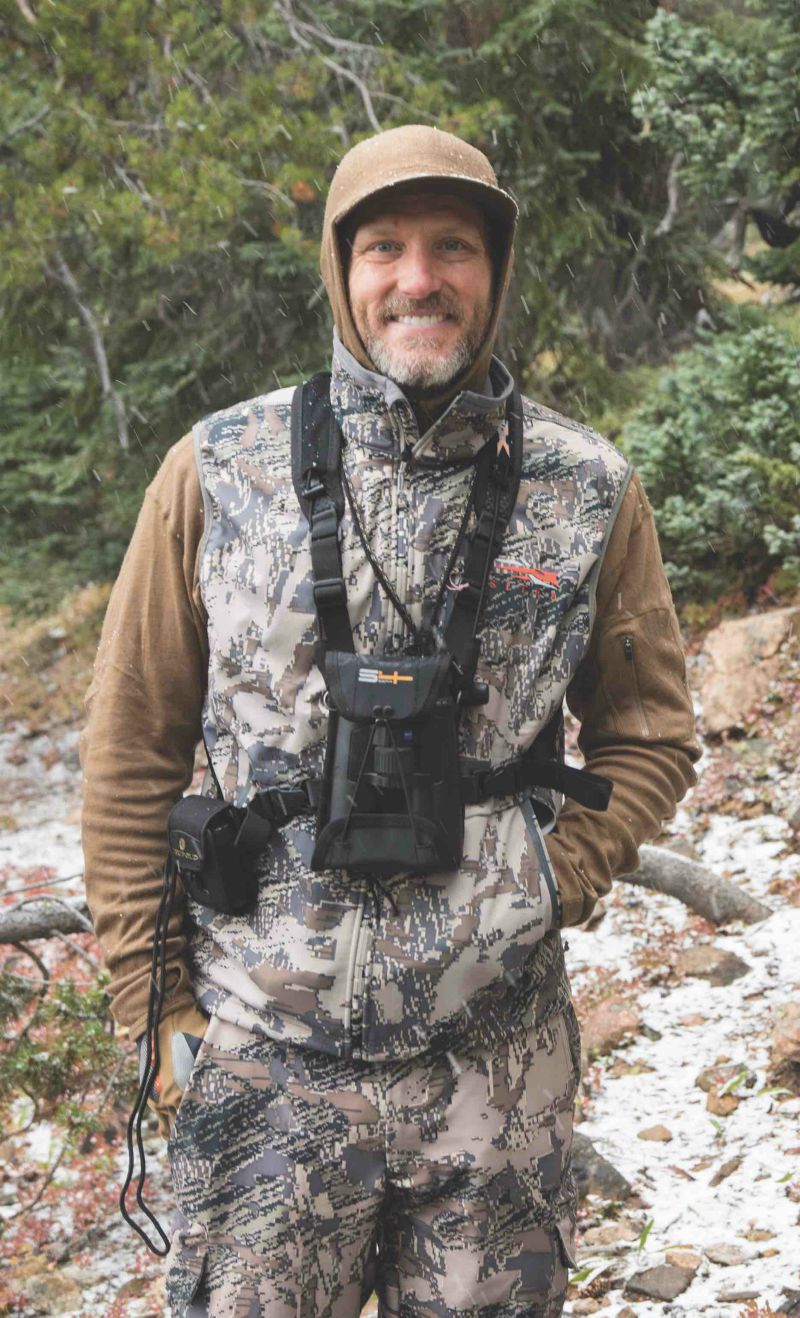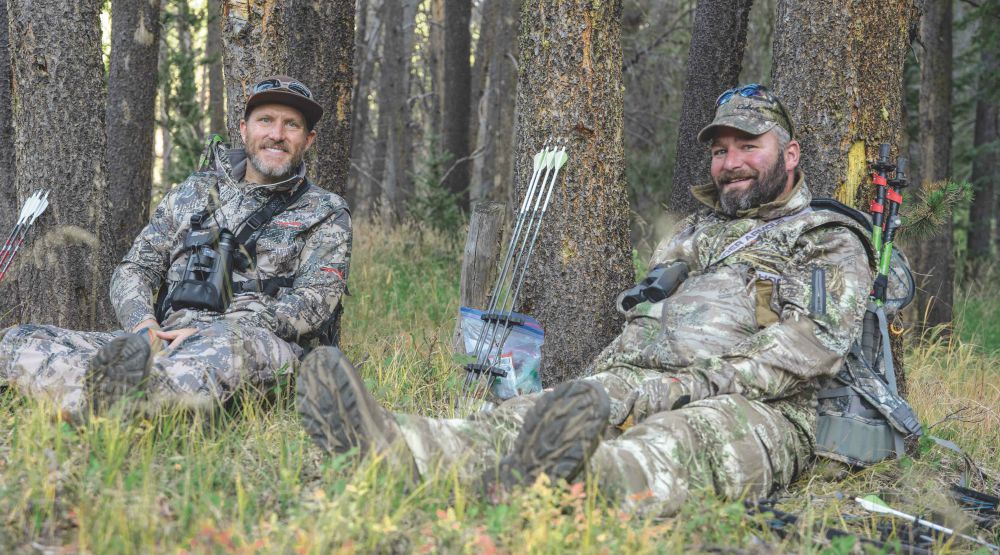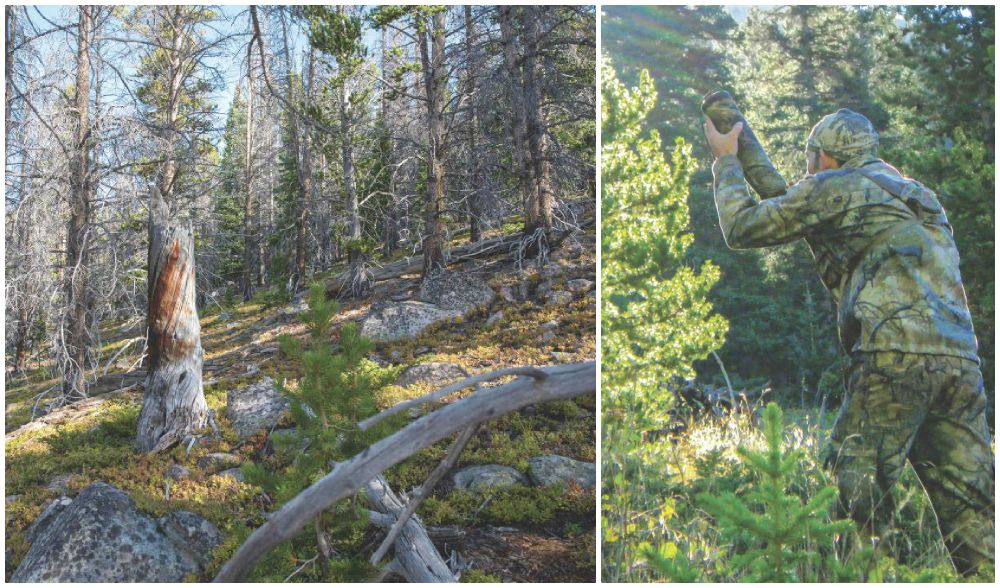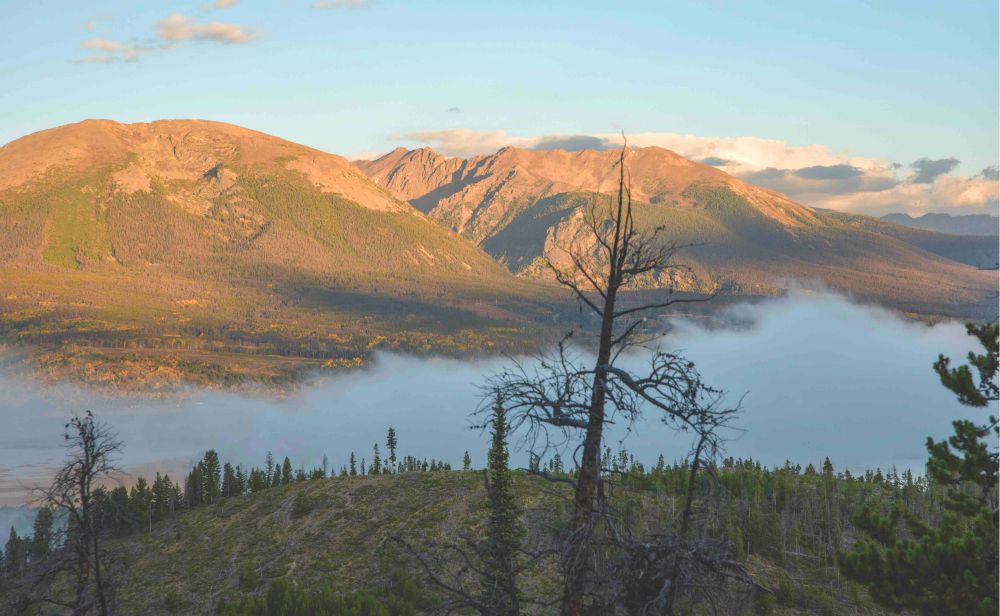The grueling 24-hour drive home to New York was awkward. Barely a murmur other than humming road noise from tires rolling east. The droning sound suppressed by an overture of deafening thoughts on what the result of this Colorado DIY elk bowhunt might do to our nearly 20-year friendship.
The feeling is impossible to describe. It wasn’t anger, disappointment, regret or even sadness. As the western sun set, it certainly seemed as if our once brightly-colored bond was fading into the same darkness as the image in the rearview mirror. This wasn’t our first hunt together. In fact, we had experienced many hunts over the years; some successful, some not. At that moment and for quite some time, it felt as though it might be the end of everything.
That feeling ... seemed a lot like emptiness. An emptiness delivered by way of a trio of unfilled tags after patiently waiting years to draw, countless hours in preparation and how we just couldn’t connect the dots. Meanwhile, those same tags sat on the dashboard of the truck reminding us of our failure. But the truth to our shortcoming went much deeper than blown opportunities, poor decision making or missed shots.
A Bit of Background
This DIY elk bowhunt meant a lot to me. Having drawn the same limited-entry elk tag the year prior, I was forced to surrender it as my wife underwent treatment for breast cancer. It goes without saying that family comes first, and it was important that we got her healthy prior to having any other focus. Fortunately, she came out the other side of her illness. That said, the delay only amplified my enthusiasm and drive for success on elk.
Originally the plan was to hunt this unit with a different partner the year I initially drew, and then return to the same unit the following year to support two of my other friends in a pursuit to fill their own coveted tags. I felt confident that with fresh knowledge of the area and hopefully a freezer full of meat, I would be a great resource to help them take their first respective elk. Staving the trip off a year somehow increased the importance to me and significantly exaggerated the pressure of filling three tags in just over a week of hunting.
In contrast to the unpleasant ride home, the drive to Colorado from New York was filled with enthusiastic discussion of business, life, family, hunt strategy, and many reminiscent hunting stories from experiences past.
We were ready. Or so we thought. We had spent months hardening our bodies and minds. Our meals were prepared, we had great gear and all the essentials, we had practiced calling, shooting, hunt set ups, listened to the strategic advice of well-known elk experts, studied maps and seemingly planned out everything.
We’d bowhunted the unit multiple times in the past and done well, especially for flatlanders. Luck is where preparation and opportunity meet, right? In our minds, this was a foregone conclusion. We were going to kill three elk, and it was going to be high-5s and hugs all week as we disrupted the statistics and headed home with coolers full of delicious and dark primal cuts.
The statistics are the statistics for a reason, and it goes well beyond the conventional reasoning of 90 percent of the elk occupy 10 percent of the habitat, or the fact that they’re just a hard animal to hunt. During one of our conversations on the way out my friend quoted the statement, “Success is a journey not a destination,” but we all wanted it so badly we could taste the backstraps. And this is where the ultimate failure in preparation found us, and how our relationship came into jeopardy.
DIY Elk Bowhunt: The Pursuit Begins
Upon our arrival, camp was set up quickly, our bows were dialed in and although we got off to a late start, the first evening’s hunt came as close to a kill as the group could get. We hard charged the mountainside at our predetermined hunt location and within no time struck a bull that clearly wanted to die — and then, another and another and another. We set up and proceeded to call in a beautiful trophy-sized bull to less than 30 yards, but due to the thick timber no arrow was loosed. We worked in sync, spirits were high and the plan was coming together.
Until It All Fell Apart
After that day, things went downhill in a hurry. We experienced failure after failure. Emotions ran high, tempers flared, friction grew and communication fell apart. Relationships eroded to the point of disrepair — all in the name of elk. Where had we gone wrong? We were so prepared.
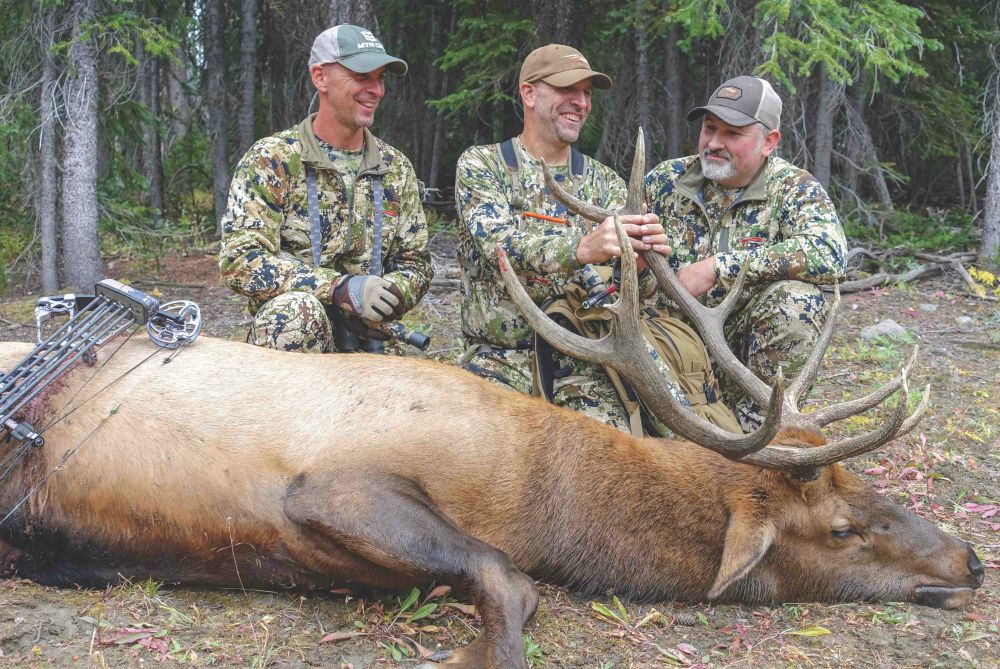
When it comes to a Rocky Mountain elk-tagging trifecta, it’s tough to beat the team of longtime friends (left to right) Corey Jacobsen, Donnie Drake and Dirk Durham.
All For One and One For All?
It’s no secret that Corey Jacobsen is an exceptional elk caller and an authority on elk hunting. With nearly a dozen World Elk Calling Championship titles to his credit and a wall full of impressive racks, the owner of www.elk101.com knows elk, but he knows his hunting partners and how they complement each another even better.
As a trio, the elk-hunting success of Corey Jacobsen, Dirk Durham and Donnie Drake borders on legendary, and according to Corey having a successful hunt and successful relationships is all about communication.
“Communication is key,” he said, “and we are very clear about each other’s roles in the field. We don’t just spend a week together out hunting. We spend a week together out doing what we love, so it’s important that we do everything we can to maximize that time in the field with a strong plan. Open lines of communication are the best way to start.”
 Recognizing that hunting experiences definitely affect your personal relationships, Jacobsen advocates that everyone understand each other’s goals and be in it for the right reason. This understanding between partners means acknowledging that the success of one is a success for all. If you want to experience the success too much for yourself, everyone else suffers.
Recognizing that hunting experiences definitely affect your personal relationships, Jacobsen advocates that everyone understand each other’s goals and be in it for the right reason. This understanding between partners means acknowledging that the success of one is a success for all. If you want to experience the success too much for yourself, everyone else suffers.
In the case of our Colorado hunt, the blood lust of finally having it all come together, and the anticipation of what we all did as individuals in preparation for the hunt, culminated into me-first attitudes with negative downstream effects. As the days of the hunt clicked by, the pressure rose and we all felt like the success or failure of the hunt was to be carried on our own broad shoulders, never realizing that our selfless method of thinking was actually extremely selfish.
Our first night’s experience gave us a false hope that the week was going to fall into place exactly as we had dreamed, but as we came to find out we were just part of the statistics of why elk hunters experience such low success. Adding insult to injury, when the going got tough, our focus became even more on our own success and not that of the group.
Jacobsen states that it’s of utmost importance to recognize that hunting partnerships come second to friendship, and it’s important not to let circumstances supersede that order of magnitude. He suggests you hunt and hang with people who are likeminded, selfless and share the same vision quest as you while understanding their role in the mix and exercising discipline and humility. Seek those who are equally or more joyful in sharing your success as they would their own and genuinely make sure you’re doing the same in return.
Like any relationship, a hunt is a give/take situation with compromise and communication. If your partner needs a little more sleep or coffee in the morning, make a plan for that and understand it’s something that will help the overall attitude and success of the group. The same goes for mental support. If someone is homesick or struggling mentally with how things are playing out, as a partner and fiend it’s your duty to lift them up and give them support. By supporting your partner(s) and their needs, they will support you in in return.
Some say it’s harder to find good hunting partners than it is to find a good spouse. They also say you can learn more about a person in the backcountry than anywhere, so it’s obvious there are situations where you and a hunting partner won’t find common ground and you’ll be forced to move on. It happens and if you feel the person you’ve been hunting with isn’t the right partner but you want to remain friends, then it’s best to air out the grievances with the overarching theme that salvaging the personal relationship is far more important than any hunt.
“There are so many advantages to having a hunting partner, whether it’s a two-person calling set up, or someone to help you pack out a haul of meat, but you can’t let those be the deciding factors on who’s the right partner for you,” said Jacobsen.
Testing the Waters
As the Chapter Coordinator for Backcountry Hunters and Anglers, Ty Stubblefield makes acquaintance with a wide range of people and personalities. His role introduces him to individuals from all walks of life and from every corner of the country. His experience as a past television producer and a contributing member to the Born and Raised Outdoor team, has allowed him to develop a great system for making sure you choose the right hunting partner and maintaining friendships. Through this Stubblefield has experienced conflict in both his career and in the backcountry.
“I see all sorts of relationships and how hunting can affect them,” he said. “With my one hunting partner it became obvious that our priorities were not the same, and as hard as the decision was, I chose not to hunt with him any longer.”

Ty Stubblefield (right) of Backcountry Hunters and Anglers says it’s a good idea to rotate daily between shooter and caller. That way, each person’s role is clearly defined when you leave camp.
These days Stubblefield echoes the thoughts of Jacobsen by selecting hunting partners that share in similar goals and selflessness. In an effort to get to know your potential hunting partner better, Stubblefield suggests doing a series of hikes prior to your hunt. Is your partner punctual and reliable, are they competitive while you’re out, and what does the conversation encircle? Is he or she a positive or negative person?
Backcountry bowhunting has enough highs and lows, so it’s important to keep each other going when Mother Nature is fighting you tooth, fang and claw. Stubblefield also suggests looking for a partner who’s equally invested in the situation as you are. This may come by way of map study, meal preparation, time, knowledge or anything else that proves it’s a two-way street while also realizing that you want to find a partner that complements your skills so everyone is amplified and best positioned for success.
Look for opportunities to become a teacher and help the person you’re hunting with to become better so you’re working together and learning from one another. Stubblefield suggests rotating between shooter and caller each day and to have a plan of who’s doing what for that day’s hunt. It might also mean waiting 1 more year to draw a tag and then supporting your partner even if you never hold a bow in your hand.
Conflict Resolution
Nothing is perfect, and should conflict arise in the field both Stubblefield and Jacobsen take a hard-lined stance on having the hard conversation and getting it out. If you don’t, then it can lead to personal attacks and long-term conflict that damage friendships beyond the hunt.
“Operate under the notion that if you have an issue, we have to talk it out when it happens,” Stubblefield said. “Once you have the talk, get it all out — we’re done and it’s water under the bridge and it’s over.”
Albert Einstein said, “Try not to become a man of success but rather a man of value.” If each of us focuses on the value that we bring to the hunting equation, then it becomes easy to work together and your success will surely rise. Make systems, communicate, set expectations, be fair, empathize and want it for everyone — not just yourself — and you are well on your way to making creating lasting memories and 24-hour drives full of conversation.
Make memories and do it for the right reason. The western landscape is humbling and so are its wildlife inhabitants, but drive for success can’t get in the way of what matters most — family and friends.
Top image by John Hafner
